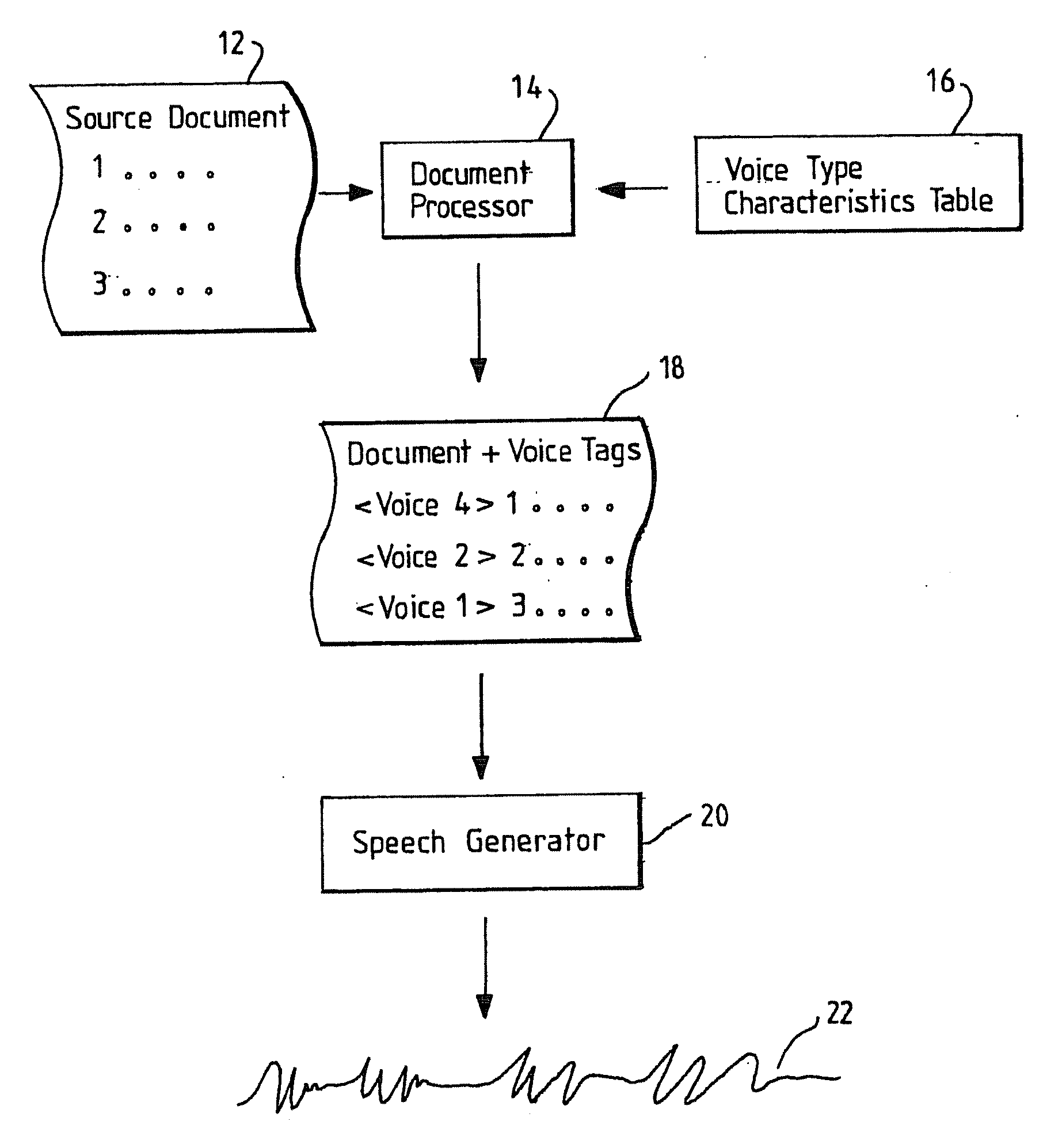Method and apparatus for preparing a document to be read by text-to-speech reader
a text-to-speech reader and document technology, applied in the field of method and apparatus for preparing a document to be read by a text-to-speech reader, can solve the problems of voicexml tag need and system not supplementing this structure with thematic information
- Summary
- Abstract
- Description
- Claims
- Application Information
AI Technical Summary
Benefits of technology
Problems solved by technology
Method used
Image
Examples
Embodiment Construction
[0019]Referring to FIG. 1 there is shown a schematic diagram of a source document 12; a document processor 14; a voice type characteristic table 16; a voice tagged document 18; and a speech generator 20 used to deliver the final speech output 22. The source document 12 and voice type characteristics table 16 are input into the document processor 14. The document 12 is processed and a voice tagged document 18 is output. The speech generator 20 receives the voice tagged document 18 and performs text-to-speech under the control of the voice tags embedded in the document.
[0020]Referring to FIG. 2, the example source document 12 is a personal home page 24 comprising three different types of windows. The first and last windows are adverts 26A and 26B, the second window is a news window 28 and the third window is an email inbox window 30. The adverts 26A and 26B in this example are both for a product called Nuts.
[0021]Referring to FIG. 3, the voice type characteristic table 16 comprises a ...
PUM
 Login to View More
Login to View More Abstract
Description
Claims
Application Information
 Login to View More
Login to View More - R&D
- Intellectual Property
- Life Sciences
- Materials
- Tech Scout
- Unparalleled Data Quality
- Higher Quality Content
- 60% Fewer Hallucinations
Browse by: Latest US Patents, China's latest patents, Technical Efficacy Thesaurus, Application Domain, Technology Topic, Popular Technical Reports.
© 2025 PatSnap. All rights reserved.Legal|Privacy policy|Modern Slavery Act Transparency Statement|Sitemap|About US| Contact US: help@patsnap.com



